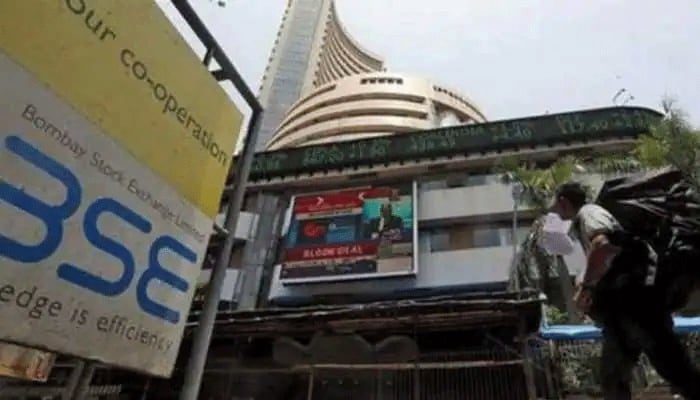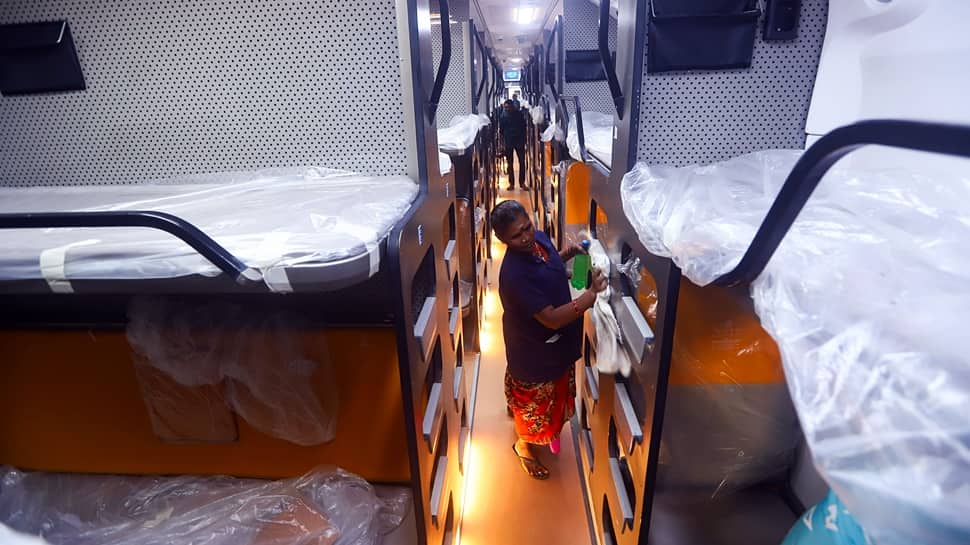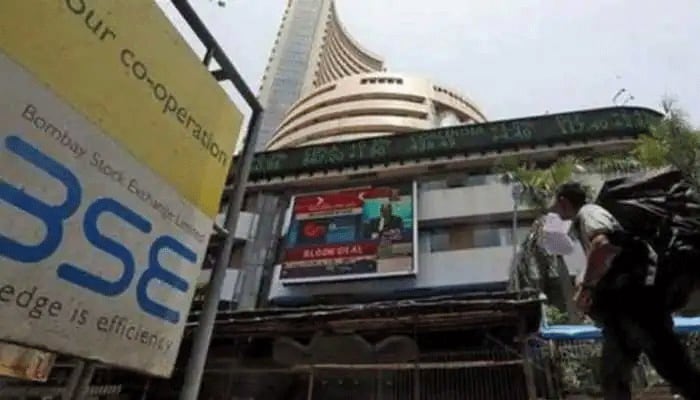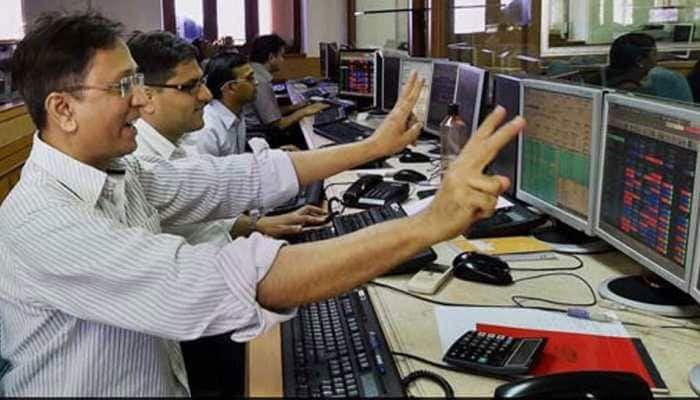Business
Sensex Surges 700 Points, Nifty Reclaims 26,000 As IT Stocks Lead Market Rally

Mumbai: The Indian stock markets opened on a strong note on Thursday, even as global cues remained mixed.
The benchmark indices, Sensex and Nifty, started the session with solid gains, driven largely by strength in IT stocks.
The Sensex opened 727.81 points higher at 85,154.15, while the Nifty reclaimed the 26,000 mark, opening 188.6 points higher at 26,057.20.
“For now, upside objective is set at 26186, with 26800 appearing as an optimistic objective,” market experts said.
“Meanwhile, downside marker is placed at 25780, but an outright reversal is not expected today,” they added.
Among the top performers on the BSE were Infosys, HCLTech, and Tech Mahindra, which saw healthy buying interest.
On the other hand, Bajaj Finserv, Maruti, and Power Grid were among the major laggards.
Similar trends were seen on the NSE, where Infosys, HCLTech, and Tech Mahindra led the gains, while IndiGo, Eicher Motors, and Sun Pharma Life witnessed selling pressure.
Broader market indices also traded higher, with the Nifty SmallCap 100 rising 0.33 per cent and the Nifty MidCap 100 climbing 0.44 per cent.
Sector-wise, the Nifty IT index emerged as the top gainer, up 1.84 per cent, while the Nifty Realty index was the only one in the red, slipping 0.08 per cent.
Analysts said that investors showed renewed optimism in the market, with strong buying seen in technology shares supporting the early trade momentum.
Reports of an imminent trade deal between India and the US is doing the rounds in market circles and the market reaction through Nifty implied open confirms this, experts said.
“Comments from President Donald Trump and responses from Prime Minister Narendra Modi indicate an early trade deal. The expected deal involves some concessions from both sides,” they added.
Meanwhile, the foreign institutional investors (FIIs) extended their buying streak for the fifth consecutive session on October 21, as they bought equities worth Rs 96 crore.
Business
IndiGo flight cancellations: India’s duty norms stricter than global standards, says IATA chief – The Times of India

Business
India’s First Vande Bharat Sleeper To Run Between Patna And New Delhi: 1,000 Kms In 8 Hours, 160 Kmph Speed, Luxury Amenities – Reports

Delhi-Patna Vande Bharat Sleeper: Indian Railways passengers have been waiting eagerly for the new luxurious Vande Bharat Sleeper Express, which has been in the final stages of roll out and is being given final touches at the BEML factory. Passengers travelling between Patna and New Delhi are set to get a completely new travel experience as the much-awaited Vande Bharat Sleeper Train is expected to begin operations this month. The train promises the speed of Tejas, the comfort of Rajdhani, and the advanced technology of Vande Bharat — all in a sleeper configuration for the first time.
Designed for high-speed night travel, the train is being positioned as a premium option for long-distance passengers.
Trial Runs to Begin Soon
Two rakes of the Vande Bharat Sleeper Train are being manufactured at the BEML factory in Bengaluru. The first rake is expected to be ready and dispatched by December 12, after which trial runs will begin on the Patna–New Delhi route, reported Dainik Bhaskar. The train will cover around 1,000 kms in around eight hours.

Railways plan to start regular services before the New Year. The train is expected to run six days a week, departing Patna in the evening and arriving in Delhi the next morning. The return service will follow the same overnight schedule, reported Prabhat Khabar.
Speed and Performance Highlights
The train is designed to run at an operational speed of 160 km/h, with a maximum speed capability of 180 km/h. According to railway officials, the ride will be so stable that even tea kept in a cup will not spill while the train is running at full speed.

One of its key strengths is rapid acceleration and braking, allowing it to cover distances faster and reduce time spent stopping and restarting at stations.
Coach Composition and Seating Capacity
The Vande Bharat Sleeper Train will have 16 coaches with a total capacity of 827 passengers:
* 11 coaches of AC 3-tier (611 berths)
* 4 coaches of AC 2-tier (188 berths)
* 1 coach of AC 1st Class AC (24 berths)
Railways may increase the number of coaches in the future based on passenger demand. Ticket prices are expected to be around the fare of the Rajdhani Express.

Current Status of Vande Bharat Trains in India
At present, 164 chair-car Vande Bharat Express trains are operating across India. These semi-high-speed trains are manufactured at the Integral Coach Factory (ICF) in Chennai and have received strong passenger response.
Due to growing demand for comfortable long-distance night travel, the sleeper variant has been developed, with the Patna–Delhi route likely to be among the first to get this service.
What the Railway Minister Said
Union Railway Minister Ashwini Vaishnaw recently told the Lok Sabha that the sleeper version of the Vande Bharat train has been indigenously designed for medium and long-distance overnight journeys.
He said that two rakes have been produced and are currently undergoing trials and commissioning.

Key Features and Facilities in Vande Bharat Sleeper Train
The interior of the train is designed to provide a premium airline-like and hotel-style experience. Major facilities include:
Passenger Comfort Features
* USB-integrated reading lamps for night-time reading
* Real-time passenger information system with audio and video updates
* High-speed Wi-Fi and onboard infotainment system
* Modular pantry unit for freshly prepared onboard meals
* Touch-free bio-vacuum toilets
* Hot water shower facility in First AC coaches
* Ergonomic ladders for upper berths
* PRM-friendly berths and toilets for elderly and differently-abled passengers
Advanced Safety and Security Systems
* KAVACH anti-collision technology to prevent train accidents
* Integrated emergency talk-back units for direct communication with train crew
* Fully sealed gangways between coaches to prevent dust and enhance safety
* Automatic plug doors that close before departure
* CCTV surveillance in every coach to deter theft and ensure passenger safety
Timings of the Vande Bharat Sleeper Train
The train will run six days a week:
* Evening departure from Patna, Morning arrival in New Delhi
* Evening departure from New Delhi, Morning arrival in Patna
The Vande Bharat Sleeper has been specially designed to offer high speed, superior comfort, and a premium travel experience for overnight journeys.
Business
Drug rebate rate cut by over a third after zero-tariff deal with US

Rebates paid by drugs firms to the NHS are being cut by more than a third next year following the recent tariff deal with the US.
The Government said the rebate costs for companies – the proportion of revenues from new branded medicine sales that drugs firms must pay back into the NHS – would fall to 14.5% in 2026 from 22.9% this year.
It comes after the UK-US tariff deal earlier this month, which will see zero tariffs on British pharmaceutical products imported into the US in return for the NHS raising spending on medicines.
As part of the deal, it was also agreed that repayment rates on NHS drug prices would be capped at 15% for the first three years.
This is the amount that drugs firms pay back to the NHS to ensure it does not overspend its allocated budget for branded medicines.
The Government said it is able to offset the lower rebate thanks to falling costs for medicines, in part driven by drugs coming off patent.
But Downing Street admitted soon after the trade deal that the agreement to increase the threshold for what the NHS can pay for new medicines by 25% will cost it around £1 billion extra a year by 2029.
The Association of the British Pharmaceutical Industry (ABPI) said the “high and unpredictable” rebate costs had been a “significant drag on UK life science competitiveness in recent years”.
Richard Torbett, chief executive of the ABPI, said: “It’s good that the amount of revenue companies will need to pay to the UK government has come down in 2026.”
He added: “However, this is only the first step in returning the UK to a more competitive position.
“Payment rates remain much higher than in similar countries, and there is work to do to accelerate the NHS’s adoption and use of cost-effective medicines to improve patient care.”
The Department for Health said the lower rebate costs should also make the UK an attractive place for investment by pharma firms, clinical trials and the early launch of new medicines.
Health innovation minister Dr Zubir Ahmed said that together with the tariff deal, “this will help secure and drive investment in the sector, ensuring Britain remains a powerhouse for life sciences for the benefit of our patients, our NHS and our economy”.
Science minister Lord Vallance added: “We need our brilliant life sciences companies to discover and get important new medicines to patients right across the NHS and to create jobs in the UK.
“This new rate helps achieve that.”
-

 Business1 week ago
Business1 week agoCredit Card Spends Ease In October As Point‑Of‑Sale Transactions Grow 22%
-

 Tech1 week ago
Tech1 week agoI Test Amazon Devices for a Living. Here’s What to Buy This Cyber Monday Weekend
-

 Tech1 week ago
Tech1 week agoThe 171 Very Best Cyber Monday Deals on Gear We Loved Testing
-

 Business1 week ago
Business1 week agoIndiGo Receives Rs 117.52 Crore Penalty Over Input Tax Credit Denial
-

 Business1 week ago
Business1 week agoGold And Silver Prices Today, December 2: Check 24 & 22 Carat Rates In Delhi, Mumbai And Other Cities
-

 Fashion1 week ago
Fashion1 week agoNorth India cotton yarn prices steady on average demand
-

 Entertainment1 week ago
Entertainment1 week agoJohn Travolta gives ‘Greased Lightnin” a Santa-inspired revival
-

 Politics4 days ago
Politics4 days ago17 found dead in migrant vessel off Crete: coastguard











